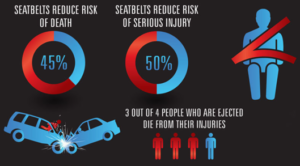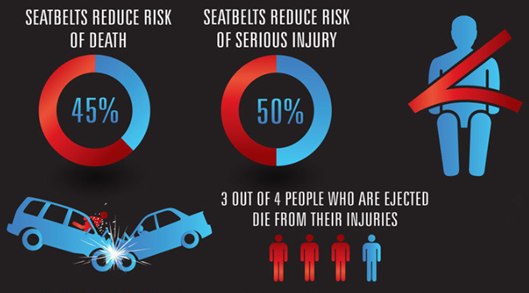Thursday May 26th, 2022
According to National Highway Traffic Safety Administration’s website (NHTSA), of the 22,215 passenger vehicle occupants killed in 2019, 47% were not wearing a seatbelt! (www.nhtsa.gov/risky-driving/seat-belts)
How about an infant you may ask?
Well, the first booster seat for an infant was created as early as 1933 by called Bunny Bear Company. It was a very primitive seat that was designed so that parents can actually keep an eye out for their infant in the car. Almost 30 years later, Mr. Jean Ames innovated the first rear facing seat with safety harness similar to today’s models (see featured picture below). 5 years after that, in 1997, ISOFIX was introduced and quickly adopted to today’s standard for anchoring child or booster seats for children.
Fast forward to today, there are many different types of car seats created for your little loved ones so they stay safe and provide comfort at the same time. However, one important aspect remains the same no matter what color, type, or manufacturer that make these child seats: safety!
According to Center for Disease Control and Prevention article, for the year 2019, the following statistics are as follows (www.cdc.gov/transportationsafety/child_passenger_safety/cps-factsheet.html): ·
- 608 children 12 and under perished in a motor vehicle accident and more than 91,000 injured.
- Of the age group identified, 38% were not buckled up at all. Age breakdown: for ages 8-12 43% not buckled up, for ages 4-7 41% not buckled up, and finally 4 years and under 27% not buckled up.
- 67% of the children that were injured, did not buckle up with any kind of restraint.
- For child restraint system were not properly utilized: 46% of car or booster seats were misused that affected their effectiveness.
Preventative measures for child seats in the US.
According to the federal law governing the United States for child seats, it states: Children up to their seventh birthday, regardless of weight, and all children weighing less than 60 pounds, regardless of age, to ride in a federally approved child safety seat. Children ages 7 to 12 must be properly secured in a seat belt or federally approved booster seat that fits their height and weight. However, as we have come to know, each state can have their own revisions and statues in addition to the US federal law. References for child seat laws in the United States per state can be found in the following website: www.verywellfamily.com/us-car-seat-laws-by-state-4082814.
Please see the following statistics below as children in conjunction with child or booster seats and the use of the respective restraint systems suited to their age group can increase the chances of their survival in a motor vehicle crash.
- Car seat reduces the risk of injury in a crash by 71-82% when compared with seatbelt alone.
- Booster seat reduces the risk of injury in a crash by 45% for children 4-8 when compared to use of seatbelt alone.
- For older children and adults, the use of seatbelt reduces risk of death or serious
injury by around 50%.
Please remember that our main responsibility is to protect the sacred lives of our children. As Albert Einstein (1879-1955, theoretical physicist) once said “Life is sacred, that is to say, it is the supreme value, to which all other values are subordinate”.


